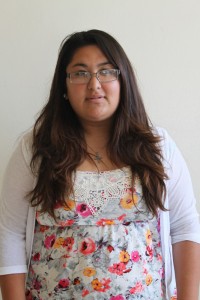Several things can go unnoticed on a campus of more than 4,000 people including the students and staff at DHS, but one thing that shouldn’t is the interpreters that facilitate communications between teachers and pupils.
Created around forty years ago, SELACO (South East Los Angeles County), located next to the C building, is a special education program that branches from the Los Angeles County Office of Education. According to Lisa Hunt, the interpreter coordinator, it is a “service provider for districts that do not offer special education programs for their students.” This means that not all of the students working with interpreters are necessarily from the Downey Unified School District. These students can be from other cities and districts that do not have special or alternative programs for students who are deaf and visually impaired.
Mark McCrory is an interpreter that is contracted to work on campus. Although he is from an agency, McCrory is assigned students by SELACO, however, he had not always planned on this profession. While going to college and working on his major, McCrory interpreted for students on the side. He fell in love with it and pursued this instead of what he originally intended to major in. The interpreter has now been working in the field for about three and a half years.
“Honestly, we are there to pass information from student to teacher,” McCrory said. “It is rewarding to see them go through the process of high school because you watch them grow up.”
His job is noteworthy because one can see how his profession alleviates any stress from miscommunications between students and their teachers.
Junior Julianne Mendoza has been hard of hearing for practically her whole life, but she was officially diagnosed when she was about seven years old. She then grew up wearing a hearing aid, but the hearing aid wasn’t sufficient. After going to the doctor, they told her that her only solution was to insert cochlear implants into her ears. These implants are electrode wires that are embedded into the cochlea inside of the ear. This electrode stimulates nerves in the ear sending an electronic signal to the brain.
She has a captionist who does the same as an interpreter with the exception that she types everything she hears for the student.
“Their job is important because they help those who can’t hear,” Mendoza said. “ It would be hard for me in class without them because all the noise there is in every class is key to understanding what goes on around me.”
Today, she continues along with her education at Downey High.
Interpreter Pam Pritzker has been working for DHS since last September. She believes that it is important to build bonds with her students because in order to help the student all around, one must know the student “as a whole”.
“As an Educational Interpreter, our primary role is to facilitate communication between deaf and hearing consumers,” Pritzker said. “Suppose a student does not understand a question they have to write an answer to, the student may ask us to translate the questions, meaning into American Sign Language, for them. Once the student understands the question, they can then write their answer.”
Pritzker feels that the students humble her because she witnesses obstacles that they have to overcome. It is an experience that only those who notice can witness.
It is easy to become aware of the obvious, however, the obvious is not easily perceived. Interpreters do what is needed for the students here at DHS to thrive.



